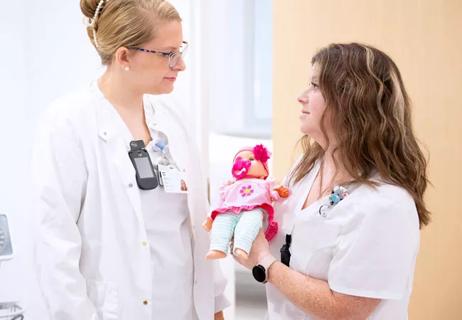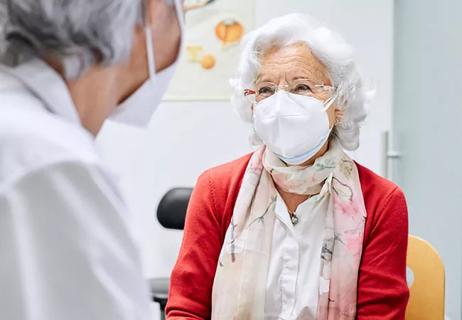Advertisement
How primary care practice has changed in the last decade

With changes in reimbursement that favor value-based care over fee-for-service, additional supportive team members that practice to the top of their licenses, and innovations in data and communications, primary care providers are in a better position to manage the health of their patients across the continuum of care than they were a decade ago.
Advertisement
Cleveland Clinic is a non-profit academic medical center. Advertising on our site helps support our mission. We do not endorse non-Cleveland Clinic products or services. Policy
“Primary care used to be a solo sport,” says Cleveland Clinic internist Robert Jones Jr., MD. “Now, I have this supportive team surrounding me to point out the needs of our patients, to help me prioritize who needs to be seen, etc. So, after a clinical exam, I may hand off the management of blood pressure or diabetes to a clinical pharmacist and a nurse, who can optimize medications and get things under control. Then, instead of seeing that patient every two weeks, I’m able to see other patients in those time slots – patients who may need more medical decision making.”
According to Dr. Jones, this team-based medicine wasn’t practiced a decade ago. He has welcomed the transition. “We see it as an opportunity to really help our patients,” he says, “and in many ways, I think it will be better for providers.”
As the transition to team-based practice continues and providers settle into their new roles, Nirav Vakharia, MD, President of Cleveland Clinic’s Medicare Accountable Care Organization, hopes that the team approach will lessen the burden on primary care providers. “Part of the burnout epidemic we have in primary care is attributable to a cognitive dissonance between our desire to help our patients lead healthier lives and working within a medical system that didn’t make that easy, or in some cases, worked against the preventive model,” Dr. Vakharia says.
Many primary care physicians suffer from information overload. They start and end their days with their inboxes full data on their patients, from visit summaries from specialists and emergency departments, to lab reports and refill requests.
“All of this data doesn’t necessarily make our lives easier right away,” says Dr. Jones.
“There’s still the need to manage the patients you have in your exam rooms, despite alerts that dozens of your patients are due for vaccinations and several hundred may have uncontrolled diabetes. When we log into the medical record, we can be confronted by a sea of red, and we’re still learning how to reliably act on that data, and to have that data predictably guide how we organize our day,” Dr. Vakharia adds. “We’re in the clunky middle right now — between a pre-data era of reactive practice and one where we practice fully integrated, proactive medicine.”
As a health system, Cleveland Clinic is intentionally working to redesign the primary care workday in order to balance these needs. Cleveland Clinic has worked with its payors to transition primary care reimbursement from fee-for-service to a capitation model. “This model allows us to take a deep breath and consider what our patients really need. It reintroduces flexibility and autonomy to our workdays,” Dr. Jones notes.
Primary care providers at Cleveland Clinic Community Care manage a panel of approximately 2,000 patients. “It’s really a paradigm shift,” says Dr. Vakharia. “By leveraging the team and our data analytics, we can move to understand the health of our entire population of patients. As a result, we may notice that a patient is hypoglycemic and send a nurse to the home to check on the patient and make recommendations. As the primary care physician, we are more like the Chief Medical Officer of our entire panel, guiding the care of our patients rather than doing everything ourselves.”
Advertisement
“We supervise the preventive care our patients need, and step in when clinical decision making is warranted. With population health, we have the opportunity to recognize and adjust for trends in our populations, which means better care for our patients and less burnout for us,” Dr. Vakharia concludes.
Advertisement
Advertisement

Pilot study confirms feasibility of conducting additional research on the novel treatment

Longer hospitalization does not mean a safer, faster recovery for patients age 70+

Structured data helps identify older adults at risk for poor outcomes, defines patients who require more comprehensive assessments

Social prescribing turns leisure activities into good “medicine”

A large geriatric study aims to find the answers

Analysis underscores how telehealth can help pinpoint elder abuse

Accurate, transparent documentation may reduce risks associated with common disorder